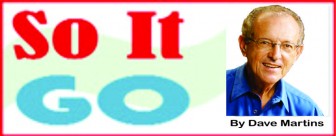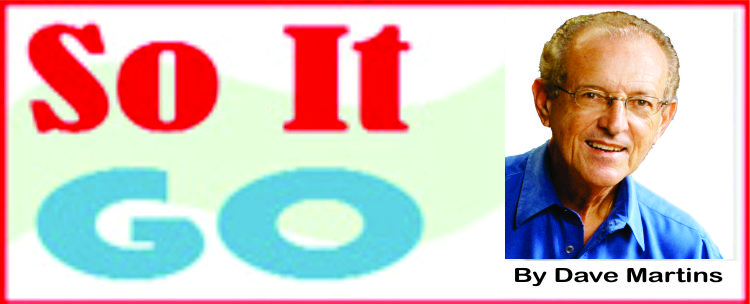Every time I meet a foreigner in place in Guyana, I’m curious about (a) what led them to our country and (b) their impressions after being here a while. Although people will understandably seem hesitant on the second point, I recently met two Jamaicans – Kevin Campbell and Andrew Ebanks – who are working in Guyana as flight instructors at the Air Services Flight School, and I couldn’t wait to talk to them about Guyana. I have spent a fair amount of time in Jamaica and was interested in how a Jamaican would see us. I was in for some surprises.
Both of them referred often to the similarities. Said Andrew: “We were both genuinely surprised at how similar it is. It is a perfect mix of city, Kingston, and country, St Elizabeth, where I’m from. One difference is that in Kingston businesses open until 9-10 at night; even in the country they’re open until 8 or 9 and on Sundays; here at 4, many of them are shut. That happened to us: we’d go to buy something late afternoon, the place shut?”
Kevin agreed: “On the way in from the airport I felt like I was in Jamaica. The only difference was seeing those big trucks on their way to the bush; there was a lot of them. Other than that, it’s much the same feeling. Even on Regent Street, apart from the Guyanese accent, you would think you’re at Crossroads or in downtown Kingston.”

Both “bredrin” commented on the similarity of popular music tastes they found in Guyana. “We hear more hip hop in Jamaica, and more chutney and soca here, but other than that pretty close – there’s a lot of reggae and dancehall here.” And the party scene, they say, is similar.
On food, however, the gentlemen are definitely missing home. From my own spells in Kingston and Ocho Rios, I can attest to the fantastic flavour of Jamaican jerk dishes. (A stop at Faiths Pen, for instance, on the drive north from Kingston, is a must for the heavenly roast yam and roast fish cooked on open-air firesides.) As Andrew put it, “In Jamaica, we cook with different spices, and we use a lot of Scotch Bonnet which has a distinctive flavour.” Kevin, who seems to be a serious cuisine chap, chimed in. “Yeah man. We miss the jerk dishes and the Escovitch fish, and, oh yes, the roast fish.” At the reference to “roast fish”, Mr Campbell had a definite gleam in his eye. On the cuisine side here, Andrew raised one flag: “Why so much bora? Everywhere you go, it’s bora.” (I like bora, but the man has a point. It’s like mashed potatoes in North America; it’s overdone.)
As a lover of dialects, I find a variety of delights in the Jamaica version, but the street folks can lose me completely sometimes with certain words or phrases, so did Kevin and Andrew hit the same bumps here? They both looked sideways at each other at my question. “Well, only one word,” was Andrew’s reply. Both reluctant to tell me what the word was, they eventually revealed it was the classic Guyanese cuss word, used only by us, that shocks people the first time they hear it. (I obviously can’t use it here, but you have to know what it is.) They reported no trouble dealing with our dialect, except in the far more rural settings. “There the accent is deeper,” said Kevin, “and it sometimes takes a few seconds to process before you can respond, but it’s the same thing in Jamaica. I’ve been to some rural communities there where I’m clueless as to what they’re saying.” But the unique Guyanese cuss word had clearly had an impact on them. “That one was new to us,” they said, with the shock still showing on their faces.
In their work as flight school instructors here, the two J’s take students through a Private Pilot Licence course
(6 months) and a subsequent Commercial Pilot Licence course (12 months) with five-day-a-week classes. One Guyana impediment is weather. Andrew says, “It’s one of the biggest factors we have to contend with; a new student isn’t ready for rainy weather. Here I was out flying just recently, and it was clear; I made two turns and suddenly, clouds. Where did that come from? The weather in Jamaica is far more predictable.” And Kevin said that the infrastructure for meteorology in Jamaica, a smaller country, is better there, with detailed weather information now available for each parish. “Here,” said Andrew, “in a vast country, with some remote locations, you’re sometimes flying to places where the weather report is more or less a visual from a person on the ground.”
In his professional capacity, Kevin referred to the standard of the airline companies here. “I’m impressed; I find here to be better. There’s more emphasis on maintenance at ASL where I work, for example, and on keeping the aircraft clean, washing them every day. In Jamaica, we certainly have the maintenance and ensure everything is in order, but it’s not as aggressive as it is here.”
Asked what they would relay about Guyana, the two Jamaicans, who are seeing more of this country every day, say they would tell people interested in eco-tourism that Guyana is a great place to go. They will report that the traffic is worse in other places, that you can easily understand the natives, and that Caribbean people will be very much at home with the music and the food. At the same time, if I can summarize for them, visitors should remember two things: bring an umbrella, and when you’re eating out ask them to ease up on the bora.






